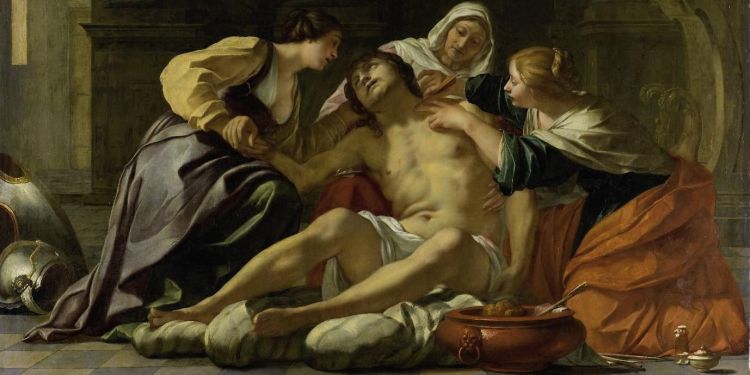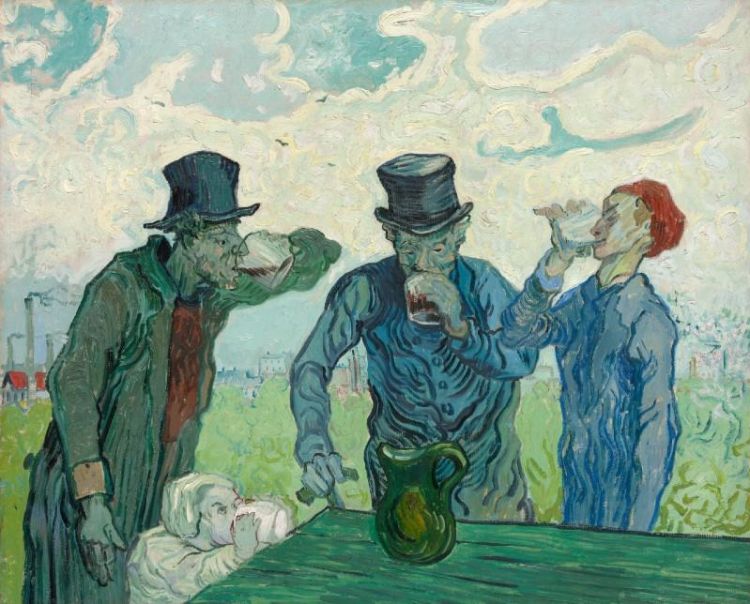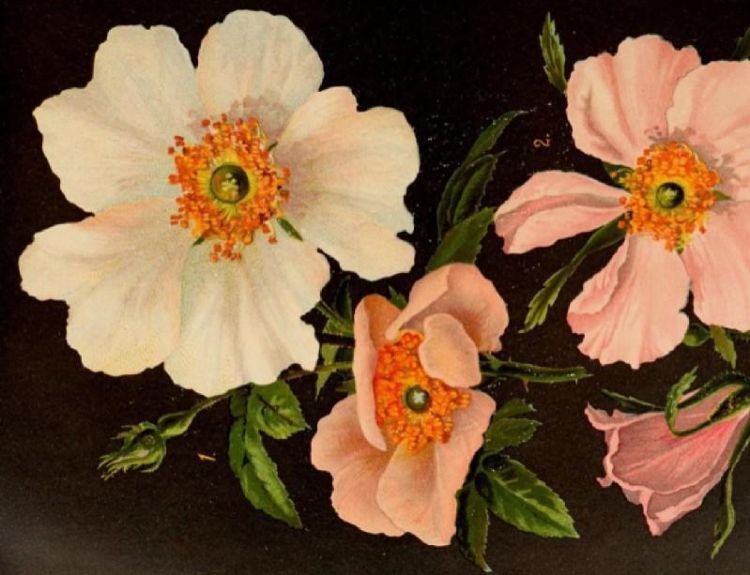Masters students use open access collections to curate online exhibitions

Masters students from the School of Fine Art, History of Art and Cultural Studies have curated nine new online exhibitions using a range of open access collections.
The exhibitions have been developed as part of Interpretations — a core module for students taking Masters (MA) courses in Art Gallery and Museum Studies and Arts Management and Heritage Studies.
Interpretations is a module based on an action learning approach. Students are supported to learn about object research, interpretive practice, text writing, visual communication and marketing through the process of developing an online exhibition.
Module leader Dr Laura Swithenbank reflects on this year’s online exhibitions:
“This year, students have worked hard to produce nine online exhibitions using public domain and Creative Commons license objects from national and international museum, gallery or library collections.
“Working in small groups, students make use of a range of international collections that have been made available with clear copyright licences in place for use and in some cases editing. This year’s collections have included the Smithsonian Imstitution, the Metropolitan Museum of Art, the Science Museum Group, Wellcome Collection and the Rijksmuseum.
“I have been impressed by the creativity of the students this year, especially in terms of the topics they have chosen to tackle and the stories they tell through their interpretive projects.”

Detail from ‘St Sebastian Nursed by Irene and her Helpers,’ Jacques Blanchard, 1630 – 1638. Oil on canvas, h 153cm x w 202cm x d 10cm x w 41kg. Rijksmuseum Collection. CC0 1.0 Deed license. Featured in Modern Martyrs online exhibition.
Exhibitions for 2023/4 cover wide ranging themes such as nature, safe sex marketing, gender and the politics of drinking.
Modern Martyrs uses images of Catholic martyrs from the Rijksmuseum as a starting point to explore how these figures are received today. Using innovative ways to produce the concept of the exhibition, the result is entertaining, complex and fresh.
The Human Season explores the human experience of being subjected to seasonal changes and forced to adapt for our own survival. Using the Metropolitan Museum of Art collection, it showcases how communities from around the world have responded to these circumstances in unique ways through their cultural expression and methods of adaptation. The exhibition features provocative and interesting interpretive text, and effectively uses poetry to set tone, atmosphere and supplement the experience for the viewer.
Shall We Grab a Drink? explores how artists from all around the globe represent drinking and drinkers “from Ancient China and Greece to a night out with the lads; and from Christian eucharist to a Cosmopolitan cocktail”. Drawing on the Art Institute of Chicago’s open access collection, the approach to the topic of drinking treads an interesting line of not being either too celebratory or moralistic about the subject in a way that is both effective and masterfully done.

Vincent van Gogh, ‘The Drinkers, Saint-Rémy-de-Provence,’ 1890 (detail). Oil on canvas, 59.4 × 73.4 cm (23 3/8 × 28 7/8 in. Credit: Joseph Winterbotham Collection. Reference Number: 1953.178. Art Institute of Chicago. CC0 Public Domain Designation. Featured in Shall We Grab a Drink? online exhibition.
Don't We Deserve a Name? retells the imagined stories behind 'unnamed' women in art history and narrates from their perspective, through a new interpretation of the York Museums Trust collection.
Sourced from the Wellcome Collection, Rubber Revolution: Safe Sex Marketing in the AIDS Epidemic explores different approaches in sexual health marketing related to AIDS and HIV from the 1980s to today.
HERitage: Hysteria’s Shadow makes use of the Science Museum Group’s online collection to explore how medicines and misdiagnosis have been used to control women’s bodies and behaviours.

Floral Impression in Gartenflora Magazine, (p.658), Erlangen, F, Enke, 1852-1940. Contributed by: New York Botanical Garden, LuEsther T. Mertz Library. Source: Biodiversity Heritage Library. Copyright status: Public Domain. Featured in People Living with Nature online exhibition.
People Living with Nature asks the question, ‘what happens when nature and culture come together?’ Using documents from the online collection of the Biodiversity Heritage Library, the exhibition takes visitors through the intertwined history of plants and culture and weaves contemporary perspectives to consider their own future interactions with the natural world.
The Home charts the developments of the home through the 19th and 20th centuries. Using artefacts from the Smithsonian collections, the exhibition considers how we can understand how the ‘home’ has changed through time and how different ideas have brought us to the present day.
The Lion’s Share features paintings from the late Georgian to early Victorian period from the collections of the Yale Center For British Art. The exhibition takes a look at the representation between men and animals and women and animals and aims to demonstrate the ways in which the art of the period represented the idea of binary gender roles.

Sir Edwin Henry Landseer, 1802–1873, British, ‘Portrait of Mr. Van Amburgh, As He Appeared with His Animals at the London Theatres,' Summer 1846 to March 1847.’ Oil on canvas. Yale Center for British Art, Paul Mellon Collection. CC0. 1.0 Universal license. Featured in The Lion’s Share online exhibition.
Action learning and working together as a team has been at the fore of the curation experience gained by the MA students throughout the Interpretations module. MA Art Gallery and Museum Studies student Eleanor Bareham said of co-curating The Lion’s Share:
“Most members of the group had limited curatorial experience, and had not met before, so initially the scope of the project was overwhelming. Due to the broad backgrounds and personal interests of each member of the group, there was a huge breadth in proposed approaches at the start of the project.
“Once the idea to compare human and animal relationships arose, however, the exhibition began to take shape as our group realised its potential to explore complex and nuanced ideas.”
More information
The online exhibitions launched in December and will be available to view until March 2023. Further details and links to each exhibition can be found here.
A series of news stories will unpick aspects of each exhibition and student experiences of curating their projects.
Find out more about our MA programmes and the Interpretations module.
Feature images
From left:
Detail from Home of Moses Glimes, Civil War Veteran, c.1870. Photographic print with applied color, sight 7 3⁄8 x 9 1⁄2 in. (18.7 x 24.1 cm). Object no: 2002.48.14, Smithsonian. Creative Commons Zero license. Featured in The Home online exhibition.
Detail from Autumn and Winter: two heads made from flora typical of those seasons, Anonymous, Italian, 16th to early 17th century. Inspired by Giuseppe Arcimboldo, Italian (ca. 1580–1620). The Metropolitan Museum of Art 2015:13. Image used under Creative Commons Zero (CC0) license. Featured in People Living with Nature online exhibition.




